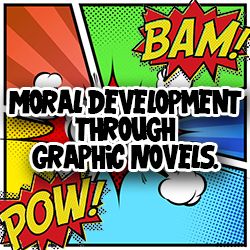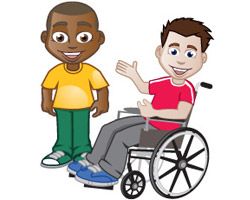Moral Development Through Graphic Novels

Can the use of comics help to introduce moral concepts to improve the development of a student’s ethical behaviour in a primary school setting? Could the concept just be a fun gimmick that attempts to appeal to the children’ interests? This article will analyse that question and provide evidence that supports both sides of this teaching strategy. Reporting on developing a sense of morality through cognitive, behavioural and emotional understanding are Piaget and Kohlberg’s theories of moral development. We use techniques in educational experiences that appeal to children throughout the different stages of their moral development. Lawrence Kohlberg’s research into the morality of justice and fairness resulted in the creation of a theory of moral development that was based on the earlier work of Jean Piaget with some obvious differences. Kohlberg concluded that the developmental process was mainly concerned with justice and continued throughout an individual’s lifetime (Shaffer, 2005).
Many factors must be considered before using comic books in an educational context in order to promote values and positive ideals. This concept will not be appropriate for all year levels and careful planning must be taken to ensure it is effective.
Educators and parents can use this research as a guide to successfully using this teaching strategy and ensuring it is suitable for their children. All children have different learning techniques and therefore the use of this research may not always be appropriate during the primary years. The successful implementation of this strategy can also be influenced by the availability of resources or freedom the teacher possess in the design of the curriculum.
‘Values education can be described as an activity in which learners are assisted to make explicit those values underlying their own attitudes and to assess the effectiveness of these values for their long-term well being as well that of other’ (Pigozzi and Verdiani, 2005 p.48). There are core values that are promoted in the initiative with individual schools asked to develop and promote values that are best suited to their community while being consistent with the national framework (Snowman, 2005).
Care and compassion, doing your best, fair go, freedom, honesty, trustworthiness, integrity, respect, responsibility, understanding, tolerance and inclusion, are several values shared by Australian schools. Of course not all comics are suitable for childcare setting, research must be conducted to find a suitable comic that can convey the core values of Australian schooling. A Curriculum that embeds these core values while appealing to children through an interactive medium can help motivate children to participate in their learning.
Using comics in a childcare setting may be seen as a fun and easy way to appeal to children, but how can values education be embedded into the curriculum or national framework effectively?
Some research suggests that comics are not real literature and that the idea is a gross commercial exploitation of children’s’ interest. We need to understand that most comics, though they have a strong values and ethics theme running through the story, might not necessarily be appropriate for a school context. Comics confront many vital moral issues and help to give them context, as a result helping the student gain a real world understanding. However when children complete comprehension tasks where they must analyse the comic from the motivation of the hero or villain, and suggest suitable solutions for a resolve, students begin combining their understanding of artistic expression and values education. Therefore if comics were to be used in the classroom there would be two key learning areas of English and the Arts would be covered.
This article has provided some insight into the use of graphic novels or comics as a way to introduce the concept of values education and morality into education during the early years. Morality can be broken down into three parts: Cognition, the ability to distinguish right from wrong; Behaviour, being prepared to act accordingly; and Emotion, experiencing pride in virtuous conduct and guilt and shame over violations behaviour. This report has endeavoured to review the theories of Kohlberg, Piaget and Turiel and uses these to critique the idea of using comics in moral development education and its suitability for use with children. Hopefully with a positive and well researched perspective, this concept can be used in a way to motivate and educate our children into understanding our choices and how they may impact on the people in their life while setting an example for others.
Written By Anthony Sorbello, YMCA Seven Hills OSHC Coordinator.


